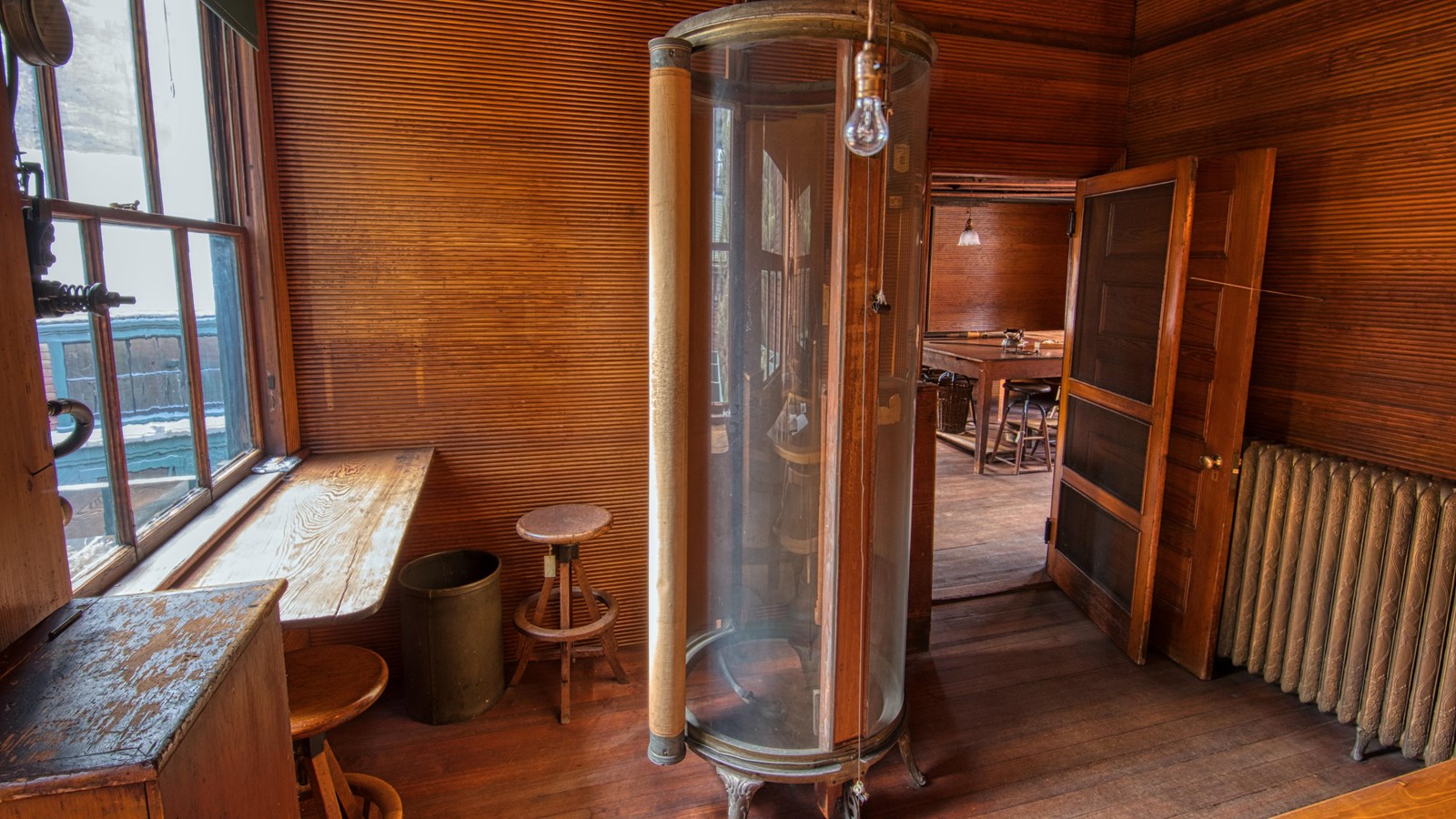Last updated: March 8, 2022
Place
The Printing Department

The tracings produced in the engineers office would come to the printing department for copies. The Olmsted firm had two different methods for printing. The first was that an image on trace paper was placed on top of another paper filled with chemicals that would react in the light. The two papers were then rolled outside of the window on platforms, where they would print and dry in the sun, a form of sun printing. Being New England, you can’t always count on it to be sunny. And you may have experienced, even when it is the season for the sun to be glaring down, weather can get in the way, so another form of printing had to be brought in. What they brought in was a machine called the Wagenhorst, and it worked the same way sun printing does, only staff could operate this year-round. A carbon lightbulb would be lowered into the tube, and just like with the window, trace paper would be placed on top of a chemical-reacting paper and pushed up against the tube. This screen would come out and cover the entire tube, ensuring no light got in. The light caused a chemical reaction where it would pass through the paper, creating a blue coloring, with white lines showing where the light hadn’t touched. The Olmsted’s wouldn’t leave the chemicals on the paper, so it was brought to the next room and fully developed in a bath. The wet plans were then placed on drying frames, then rolled into the closet, where a heater would speed along the process. There were many different sizes of plans coming out, so several drying frames of different sizes had to be created. For Blue Hills Parkway, Olmsted needed three, twenty-five foot sections of plans to encompass all of it.
